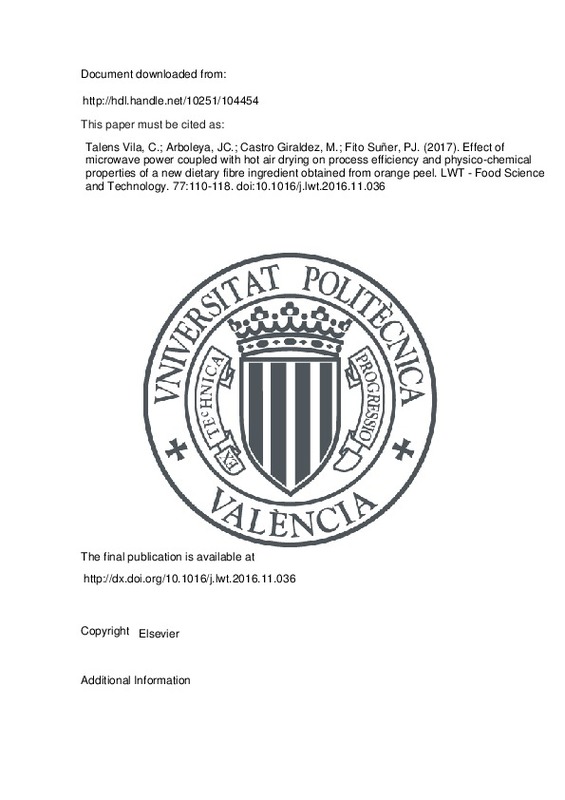JavaScript is disabled for your browser. Some features of this site may not work without it.
Buscar en RiuNet
Listar
Mi cuenta
Estadísticas
Ayuda RiuNet
Admin. UPV
Effect of microwave power coupled with hot air drying on process efficiency and physico-chemical properties of a new dietary fibre ingredient obtained from orange peel
Mostrar el registro completo del ítem
Talens Vila, C.; Arboleya, JC.; Castro Giráldez, M.; Fito Suñer, PJ. (2017). Effect of microwave power coupled with hot air drying on process efficiency and physico-chemical properties of a new dietary fibre ingredient obtained from orange peel. LWT - Food Science and Technology. 77:110-118. https://doi.org/10.1016/j.lwt.2016.11.036
Por favor, use este identificador para citar o enlazar este ítem: http://hdl.handle.net/10251/104454
Ficheros en el ítem
Metadatos del ítem
| Título: | Effect of microwave power coupled with hot air drying on process efficiency and physico-chemical properties of a new dietary fibre ingredient obtained from orange peel | |
| Autor: | Talens Vila, Clara Arboleya, Juan Carlos | |
| Entidad UPV: |
|
|
| Fecha difusión: |
|
|
| Resumen: |
[EN] Orange by-products are an excellent source of dietary fibre. The main objective of this work was to compare the physico-chemical and technological properties of fibres obtained from orange by-products by applying two ...[+]
|
|
| Palabras clave: |
|
|
| Derechos de uso: | Reconocimiento - No comercial - Sin obra derivada (by-nc-nd) | |
| Fuente: |
|
|
| DOI: |
|
|
| Editorial: |
|
|
| Versión del editor: | http://dx.doi.org/10.1016/j.lwt.2016.11.036 | |
| Código del Proyecto: |
|
|
| Agradecimientos: |
The authors would like to acknowledge the Basque Government for the financial support of the project (LasaiFood). The author Marta Castro-Giraldez wants to thanks to the UPV Postdoctoral Program (PAID-10-14) from Universidad ...[+]
|
|
| Tipo: |
|










